Entomology Digest – Fall 2025
Click here for the PDF version of this newsletter.
Letter from the Chair
Welcome back, Entomology community! I hope your summer was rejuvenating and filled with some adventure. To our new members, welcome and we are delighted to have the opportunity to work with you!
As we enter the fall semester, I would just like to express thanks and share some exciting updates. My sincere thanks to our outgoing chair, Russ Groves, for his years of service and excellent stewardship of the department. His dedication and hard work were driving forces for the success of our department. I also want to thank the faculty, our wonderful staff in the Russell Labs Hub, and our talented undergraduate and graduate students, who all contribute to cultivating excellence in our mission of research, extension, teaching, and mentorship. We should be proud of our collective efforts. The department is outperforming our peers in the college in terms of climate and the tremendous growth of our undergraduate major in Global Health, and we are among the top 10 best universities in the world to study entomology.
This year promises new opportunities. The recently developed PhD program in Ecology and Evolutionary Biology is live this fall for our first recruitment. The cross-college training program will offer new (and existing students wishing to pursue a joint degree) a cohort-based model of coursework, leadership, and outreach through deeper engagements with the Center for Ecology and the Environment and the Wisconsin Evolution. We also successfully recruited Dr. Michael Belitz to the department, who brings deep expertise in global change biology and ecoinformatics.
This year, we are going to be weathering challenges imposed by a shifting landscape of federal funding. This will lead to budget reductions, but our current planning suggests the department will remain fiscally sound and fully committed to our academic mission. As we navigate through the changing landscape, please continue to foster an environment of teamwork, creativity, and clear-eyed focus on the importance of our mission. Each of us plays a crucial role in the success of the department.
Warm wishes to you all.
P.S. If you are able, please consider giving donations, to support the diverse mission of the department.
– Sean Schoville, Professor and Chair of Entomology
Special Feature: Insect Photography in Costa Rica
Zelin (Tony) Shen (Gratton Lab): On my last morning in Costa Rica, I woke up at 4:30 to do a final check on the light sheet that had run overnight. With the owner of the reserve and our team leader, we drove up to the top of the mountain. As expected from the torrential rainfall the day before, the ground was wet, like a puddle of potting clay, and there wasn’t much activity on the light sheet. Slightly disappointed, we watched as the first glimpse of sun shone into the morning fog down below. The light sheet soon became useless as the day brightened. We were about to head down to pack things up when the owner suddenly pointed to a bush, just a meter away from the light sheet. It was a katydid, but like nothing we’d seen so far. It looked like a lichen with legs and had spikes all over its body, as if it were “the Green Knight.” All of our attention had been on the light sheet, so despite its extravagant looks and close distance, no one had seen it. All our tiredness was replaced by a rush of adrenaline. The first few pictures were taken at the location where we found it. On our way down, we found a hanging branch of moss, only accessible by standing in the trunk. Placing it in an environment more fitting of its appearance, we took a few more shots against the rainforest background before it flew off.
-1-scaled.jpg)
-3-scaled.jpg)
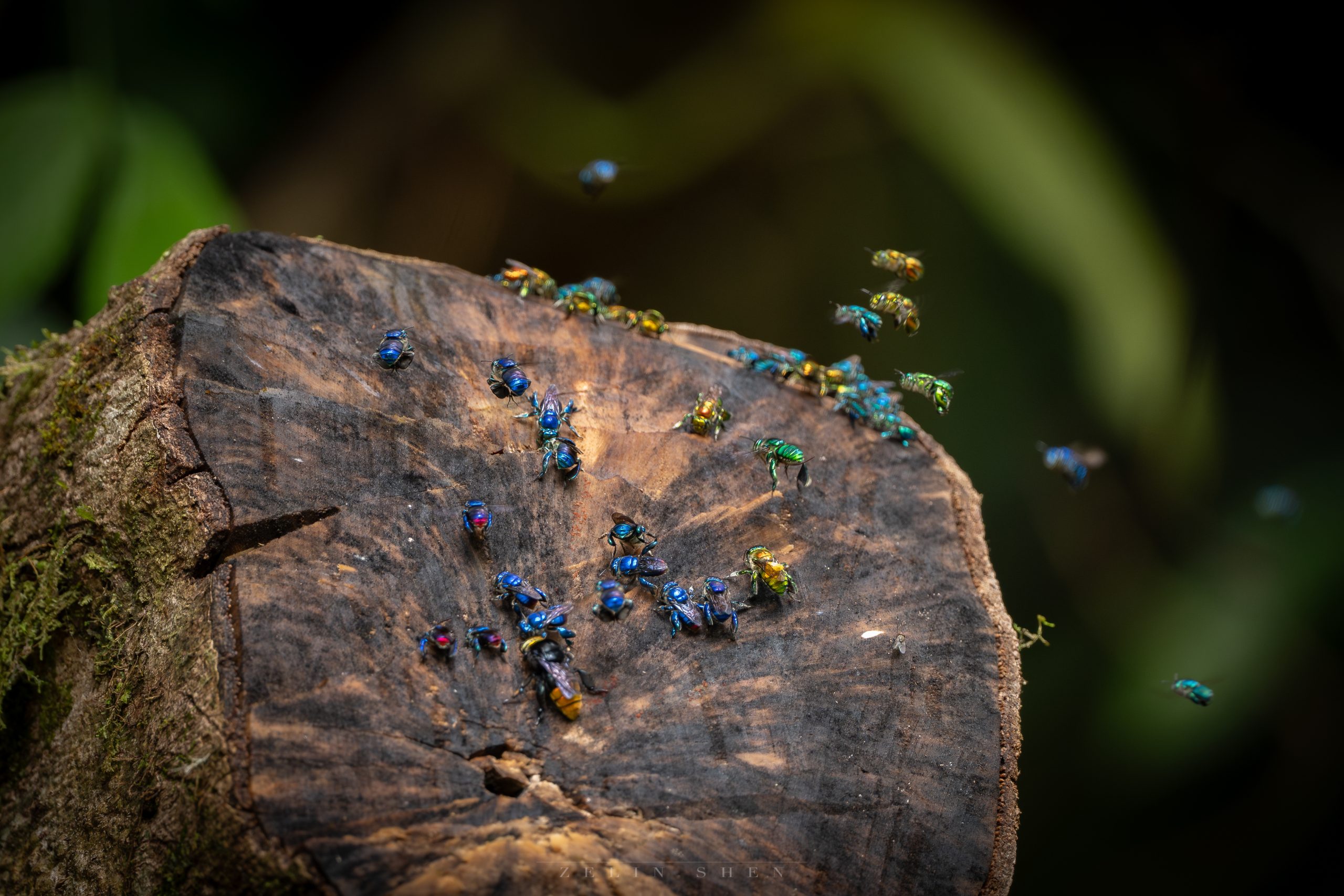
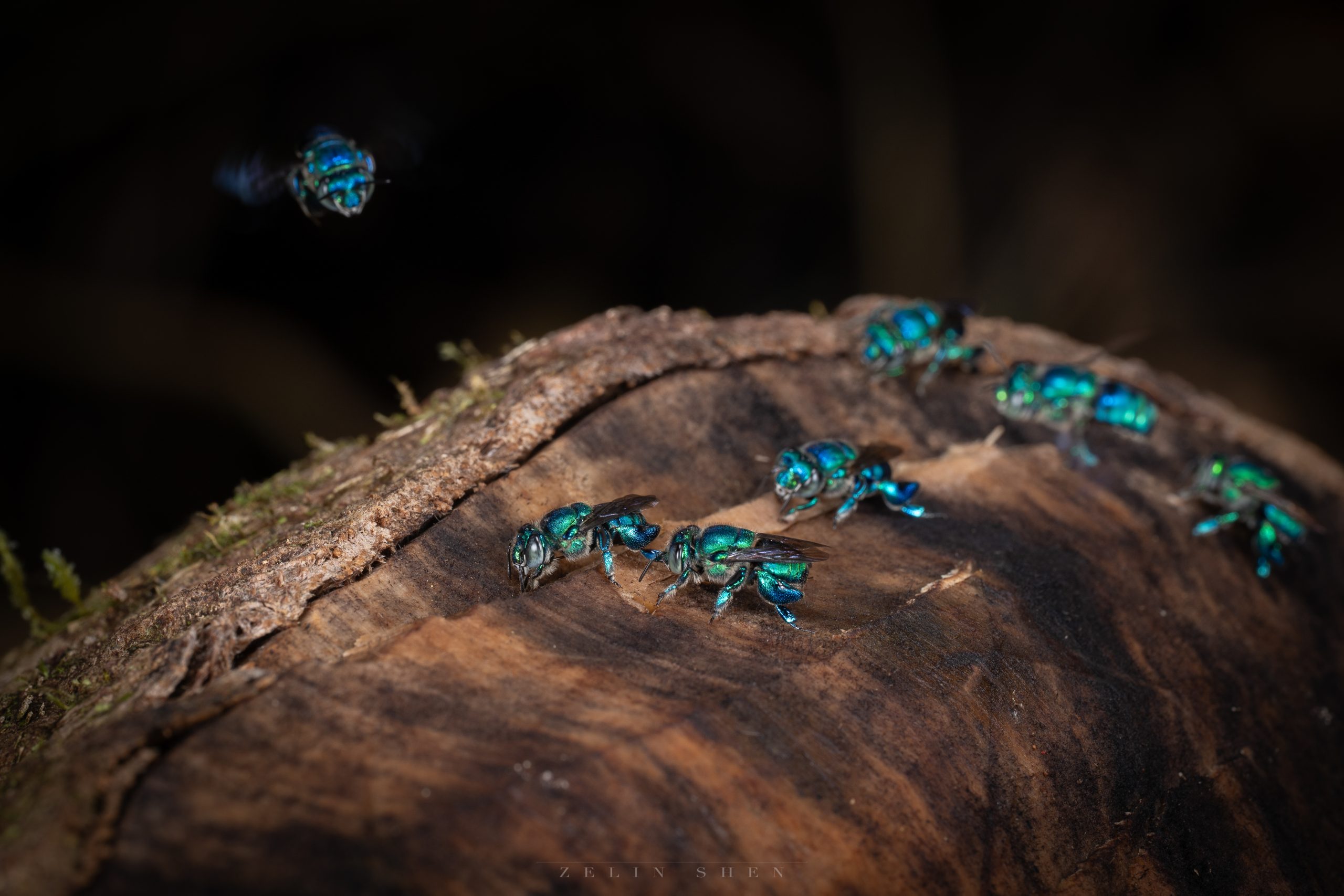
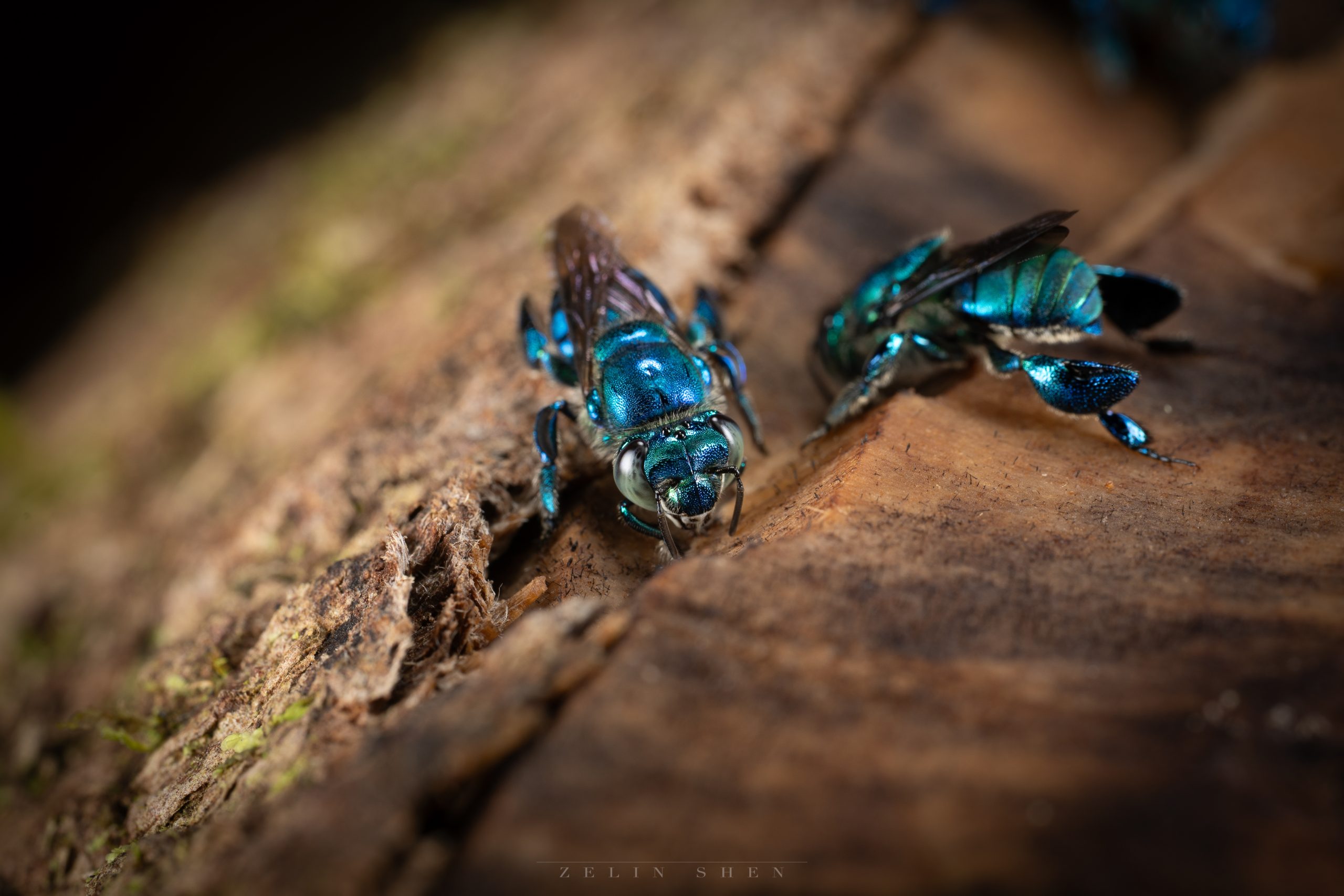
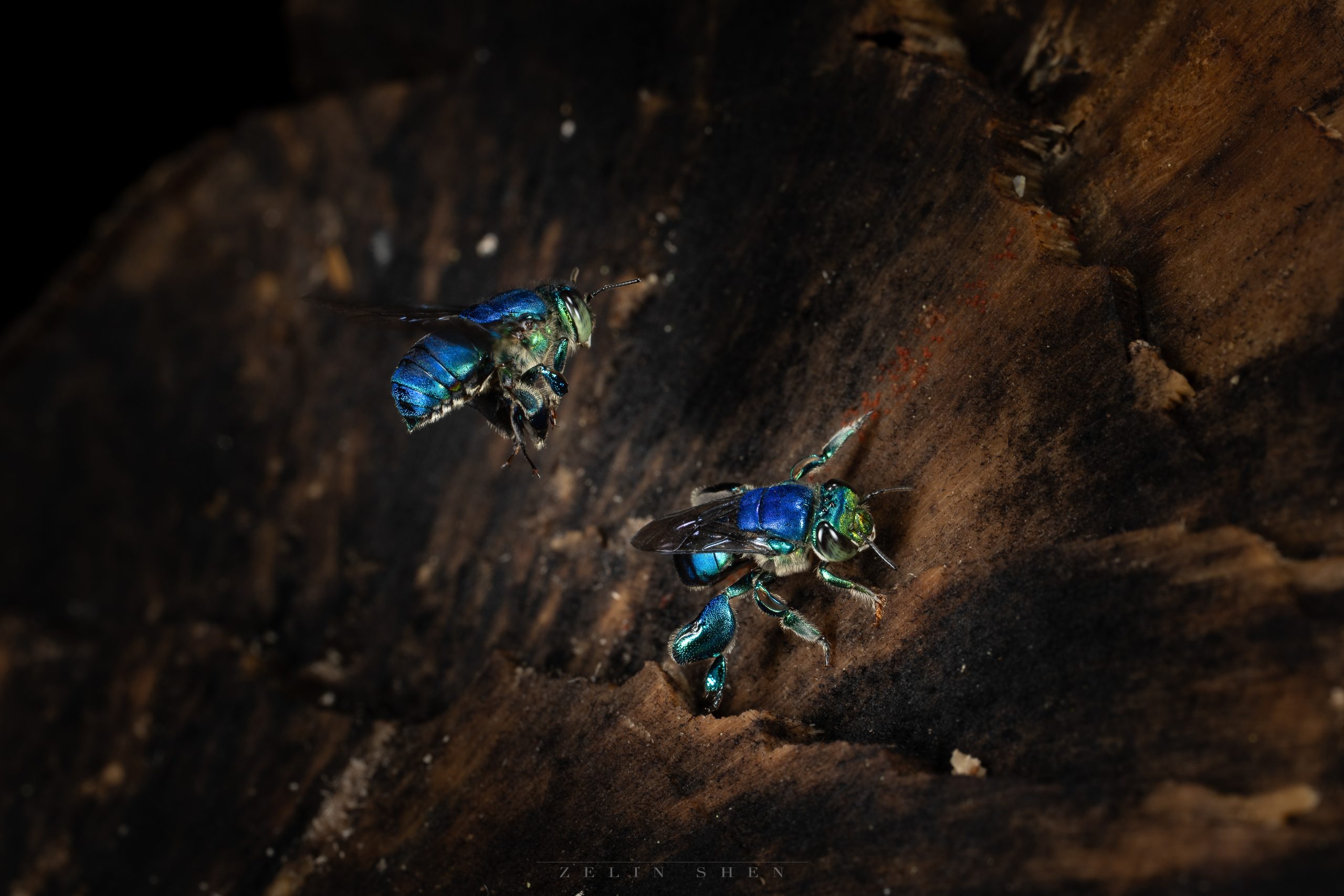
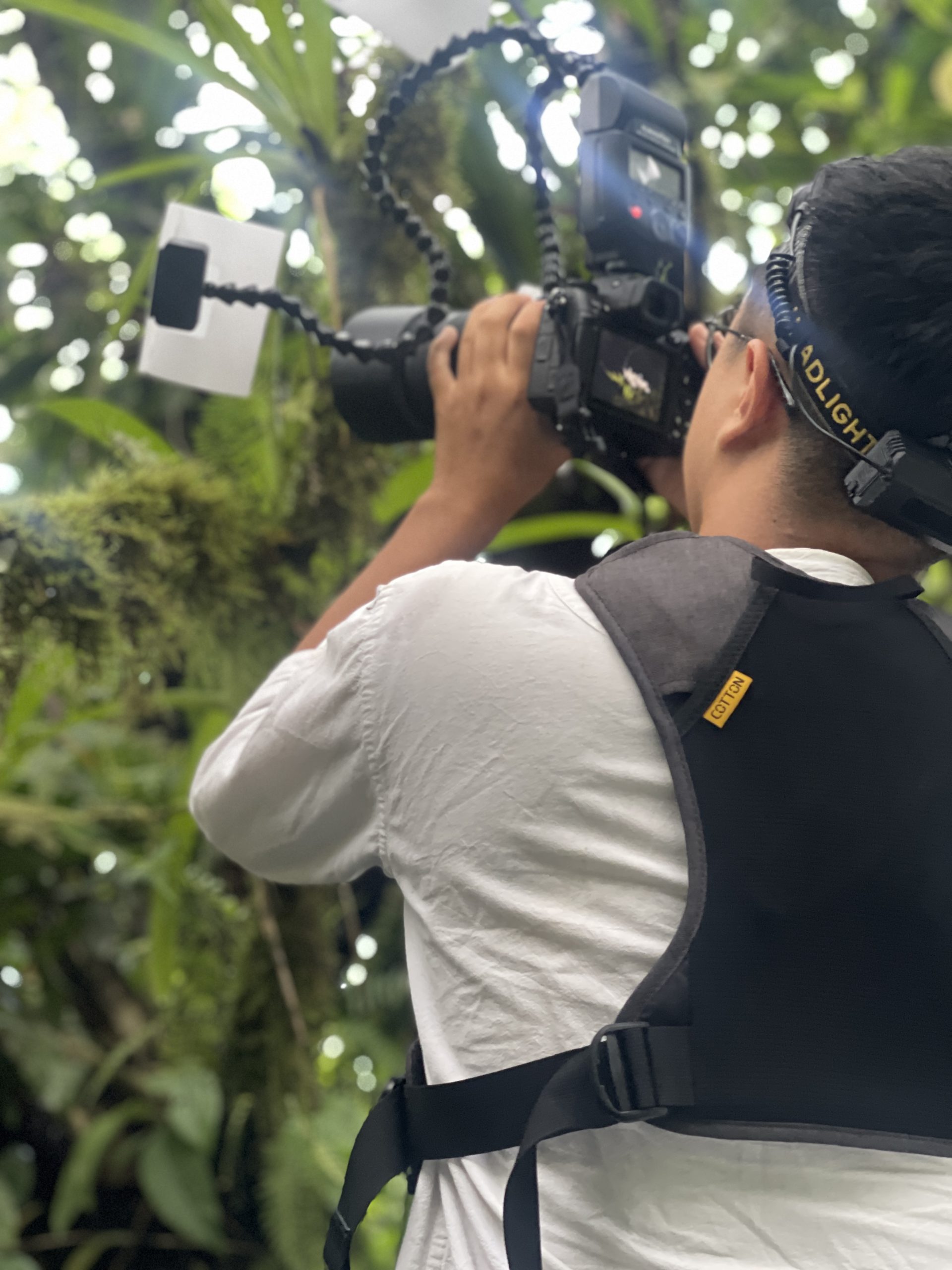
Wisconsin Insect Research Collection
In May, we wrapped up work on LepNet, the second of two recent NSF-funded digitization projects. Our hard working LT and undergraduate employees transcribed and georeferenced occurrence data representing over 93,000 North American Lepidoptera specimens from the WIRC, exceeding our proposed goal of 68,000 new records by a comfortably wide margin. We also captured ~1,500 images of exemplar specimens to share with the scientific community.
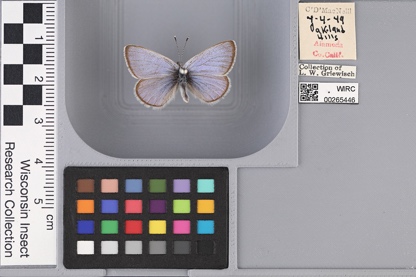
This summer, we were able to complete the initial assessment of a significant donation of Odonata and other aquatic insects from Robert DuBois, retired WI DNR biologist, largely due to the efforts of West High School students and WIRC volunteers Jayden, Kylie, and Reece. You might recognize DuBois as the author of two well-known field guides: Dragonflies & Damselflies of the Rocky Mountains and Damselflies of the North Woods. The DuBois donation consists of some 6,250 enveloped adult Odonata, as well as 21,000 vials of naiads and exuviae in alcohol.
UW Entomology alumna Thelma Heidel-Baker reached out in 2020 to connect WIRC Director Dan Young with her neighbor, a private collector who had amassed an incredibly large and diverse collection of insects from around the world. Over the next four years, Dan periodically picked up different parts of the collection—a total of 332 insect drawers (nearly 14 cabinets worth!), containing over 35,000 pinned specimens. Lepidoptera and Coleoptera are well-represented, but the Holbach donation includes many other taxa as well.
Last month, I spent 10 glorious days in the Chiricahua Mountains of southeastern Arizona while participating in Bee Course 2025, led by Bryan Danforth and other bee experts from around the world. During that time, we collected and identified specimens representing 51 genera of North American bees, highlighting the region’s incredible apoid diversity. The course was partially supported by an Academic Staff Professional Development Grant I received this year. The knowledge and experience I gained during the course will be directly relevant to the following WIRC update.
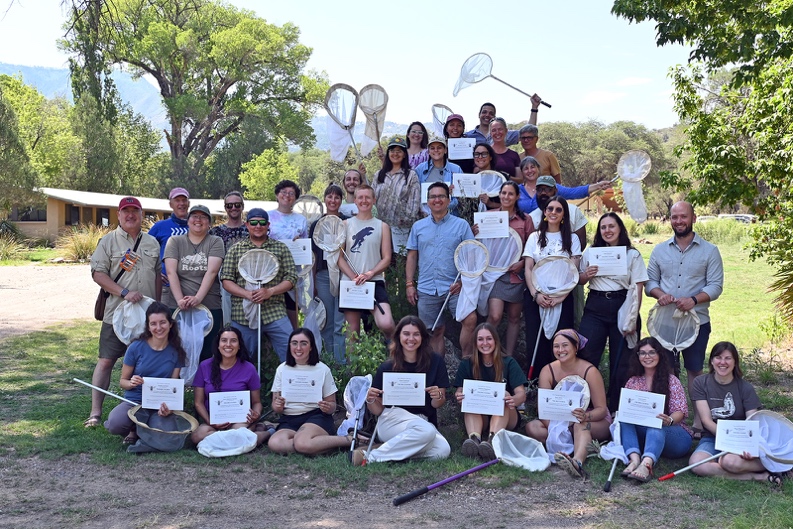
Bee researcher Amy Wolf retired earlier this year after a distinguished career at UW-Green Bay. Following a visit to the WIRC in early 2025, Dr. Wolf decided to entrust us with her collection of over 12,500 bees, amassed by Wolf and her students over many years of faunal studies in the state. This material, representing nearly 200 native bee species, will be incorporated into the WIRC’s already extensive collection—the largest and most comprehensive representation in the world of Wisconsin’s native bee fauna.
Collaborators Jessica Orlofske (UW-Parkside), Jeff Dimick (UW-Stevens Point), and I were recently awarded a grant from the Freshwater Collaborative of Wisconsin to launch BenthicNet. In part, our goal is to form “…a network of invertebrate specialists across Wisconsin that will train the next generation of experts while simultaneously expanding access to historically significant specimens. BenthicNet also creates opportunities to directly support statewide monitoring objectives of regulators or their partners.” Recent UW-Madison Entomology graduate and WIRC’s 2025 Summer Intern, Mickayla Denis, will join the BenthicNet team as an LT employee. She will continue her efforts to develop and refine best practices and workflows as we begin the huge task of re-curating and digitizing of the Hilsenhoff aquatic insect collection of 750,000+ specimens.
Finally, I found a bit of time this year to coauthor the first comprehensive paper on the mutillids of Vietnam: Okayasu et al., 2025. Current knowledge on the velvet ants (Hymenoptera: Mutillidae, Myrmosidae) of Vietnam: faunal review and new distributional records. Zootaxa: 5668 (1): 001–104.
– Craig Brabant, WIRC Curator
Bick Lab
Greetings from the Bick Lab! We’re the “Original Digital Entomology” lab at UW–Madison, led by Dr. Emily Bick, Assistant Professor of Precision Pest Ecology and Extension Specialist for field and forage crops. Our work combines classic entomology with digital tools to tackle real-world pest problems. From population biology to modeling, we’re building data-driven approaches to help growers manage pests more effectively and sustainably.
The lab has grown to 12 members this year! We’re glad to welcome Dr. Mia Phillips, now based at the USDA ARS station in Manhattan, Kansas. Mia studies substrate vibrations and is contributing to our USDA AFRI DSFAS “Eavesdropper” project. Fletcher Robbins, who just completed his master’s, is staying on for a PhD focused on updating pest maps with grower field data. Alex Arovas is starting his second year in Biological Systems Engineering and has been working on turning our Eavesdropper sensor into a field-ready prototype—75 units were deployed this year, including in the Maldives. Lauren Glynn is finishing her master’s in BSE this summer after leading work on our open-source Sticky Sonic trap for automated insect biodiversity monitoring. We’re also excited that Louis Le Breuilly is joining us from the UK as a new PhD student; he’ll be developing UAV-mounted lidar systems for insect mapping in collaboration with Brian Luck. Carmen Meyers, who started as a research intern in January, has now entered the Badger PREP program as she prepares for graduate school. Alongside them, five undergraduates are supporting the lab’s many projects.
Our extension program had a busy year as well. The Bick Lab insect pest text alert system now reaches over 400 subscribers. We launched SlugNet to help automate slug monitoring and mapping in grower fields, and hosted our first UAV field day as part of the Crops and Soils event at the Arlington Research Station. These efforts are giving growers faster ways to respond to emerging pest challenges.
Looking ahead, we’ll be advancing several publications tied to the Insect Eavesdropper project (featured recently on NPR: https://www.npr.org/2024/09/02/nx-s1-5096781/short-wave-insect-eavesdropper). We’re also excited to share that BugBug Ltd. has spun out of the lab to bring the Eavesdropper to market as a commercial tool.
In the coming year, we’ll be launching a beta version of Fletcher’s updatable degree-day models using the DATCP trapping network. We’re expanding BugPulse, winner of a WARF–Bayer challenge grant, and beginning a phenotyping collaboration with USDA scientist and UW faculty member Shawn Steffan. Ongoing projects continue with colleagues at Cornell, Kansas State, Missouri State, NC State, UC ANR, the Connecticut Agricultural Research Station, Rothamsted Research, the Maldives Space Research Organization, and several industry partners.
Chavez Lab
The Chavez laboratory welcome Nathan Lin, who will be co-advised with Dr. Schoville. Nathan’s research interests currently revolve around biodiversity and public health. He is particularly interested in the systematics and ecology of ticks – understanding how the environment and genetics play a role in the distributions and success of vectors, their interactions with and vector competence for pathogens, and the effects of their activity on humans, at individual, population, and species scales. Over the next few years, he will be investigating genomic and transcriptomic differences between various generalist and specialist Ixodes species, to better understand what affects the range of hosts ticks can parasitize. Additionally, the Chavez laboratory has put out three publications in the Spring and Summer semesters:
Publications:
- Oliva Chavez A, Gonzales JP, Harvey C, Ribeiro-Silva CS, Leal-Galvan B, Persinger K, Durski S, Olafson P, and Johnson T. 2025. Identification of Amblyomma americanum antigens after vaccination with tick extracellular vesicles in white-tailed deer. Vaccines (Basel). 13(4):355. doi: 3390/vaccines13040355
- Cassens J, Oliva Chavez AS, Tufts D, Zhong J, Faulk C, Oliver J. 2025. Whole Genome sequencing reveals clade-specific genetic variation in blacklegged ticks. Ecology and Evolution. https://doi.org/10.1002/ece3.70987
- Marnin L, Valencia LM, Bogale HN, Laukaitis-Yousey HJ, Rolandelli A, Ferraz CR, O’Neal AJ, Schmitter-Sánchez AD, Cuevas EB, Nguyen TT, Leal-Galvan B, Rickert DM, Mendes MT, Samaddar S, Butler LR, Singh N, Cabrera Paz FE, Wu-Chuang A, Oliver JD, Jameson JM, Munderloh UG, Oliva Chávez AS, Mulenga A, Park S, Serre D, Pedra JHF. 2025. Tick extracellular vesicles alter keratinocyte function in the skin epidermis. JID (accepted).
Crall Lab
Field season: The lab had an exciting and busy summer field season that included research at the UW-Madison Arboretum, Lakeshore Nature Preserve, and local solar installation, among others! Check out the video Dr. Andrzej Affek made for his summer field research at the BioCore Prairie – Microclimate, bumblebees and pollination: field experiments spring/summer 2025.
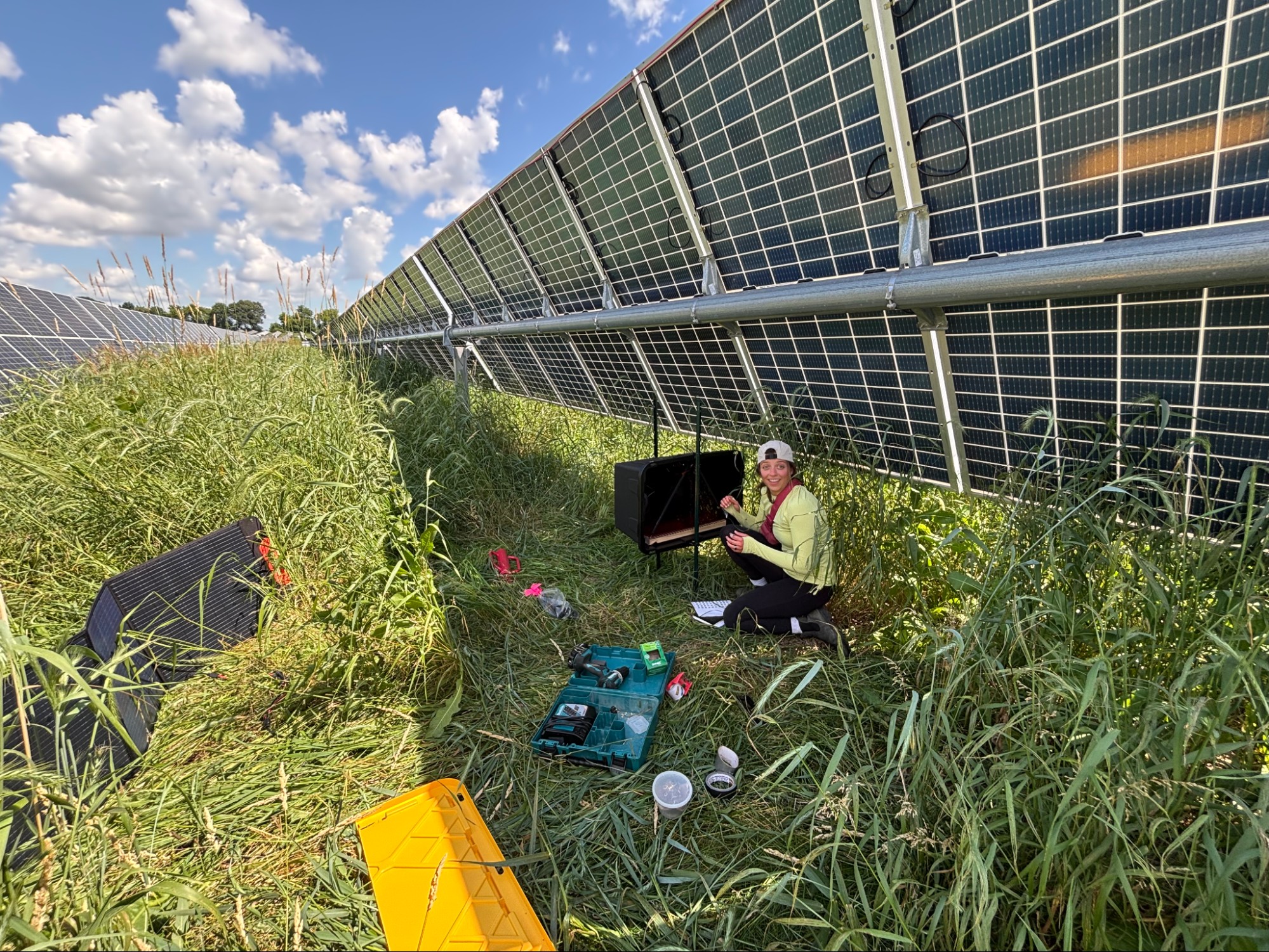
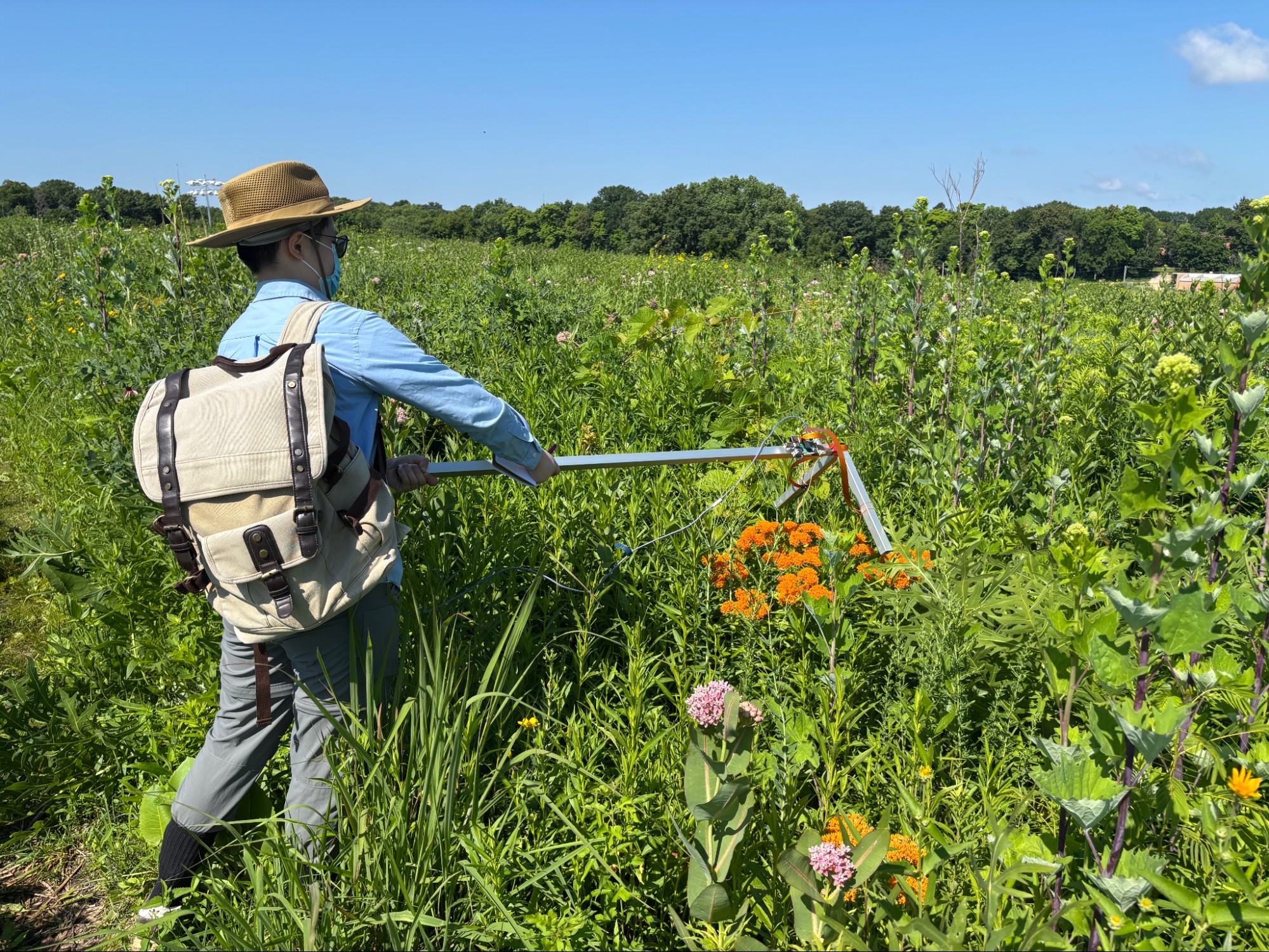
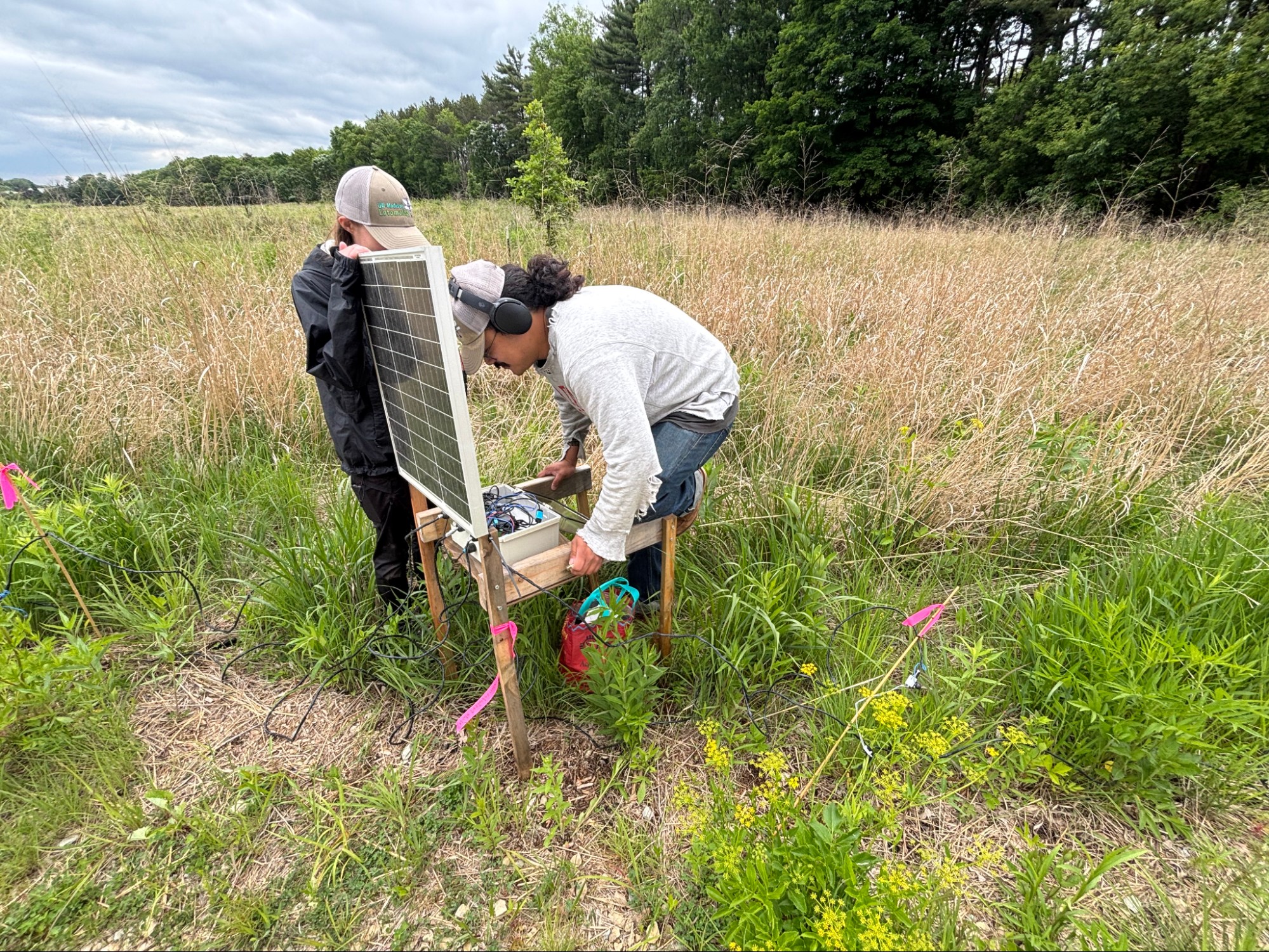
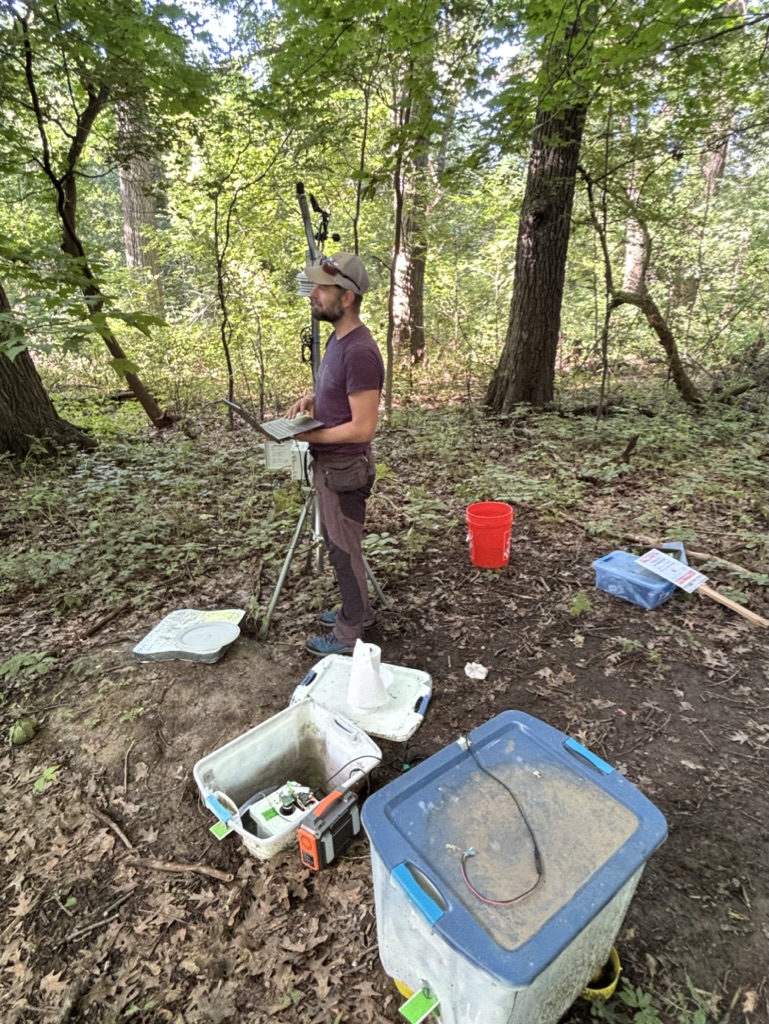
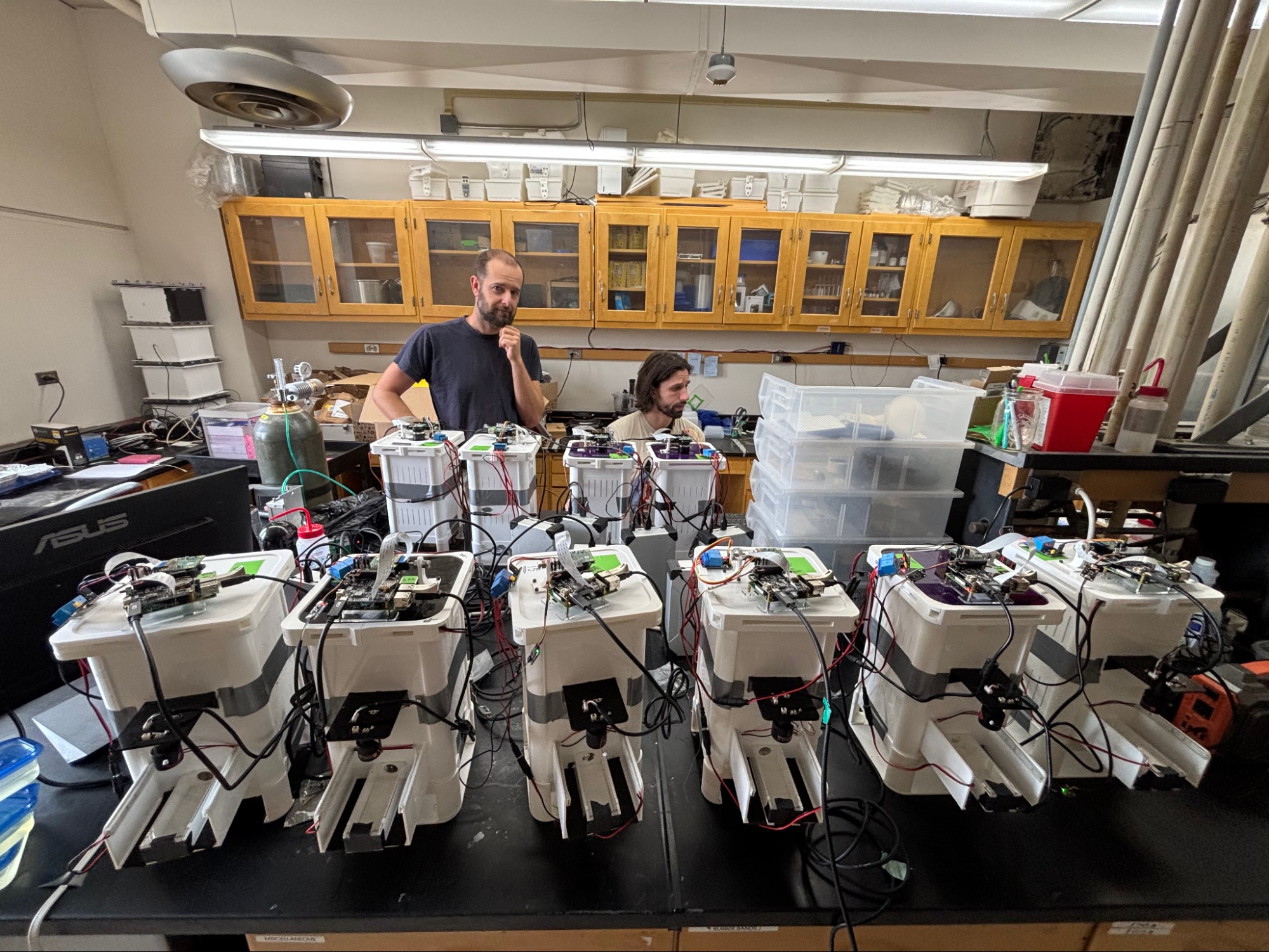
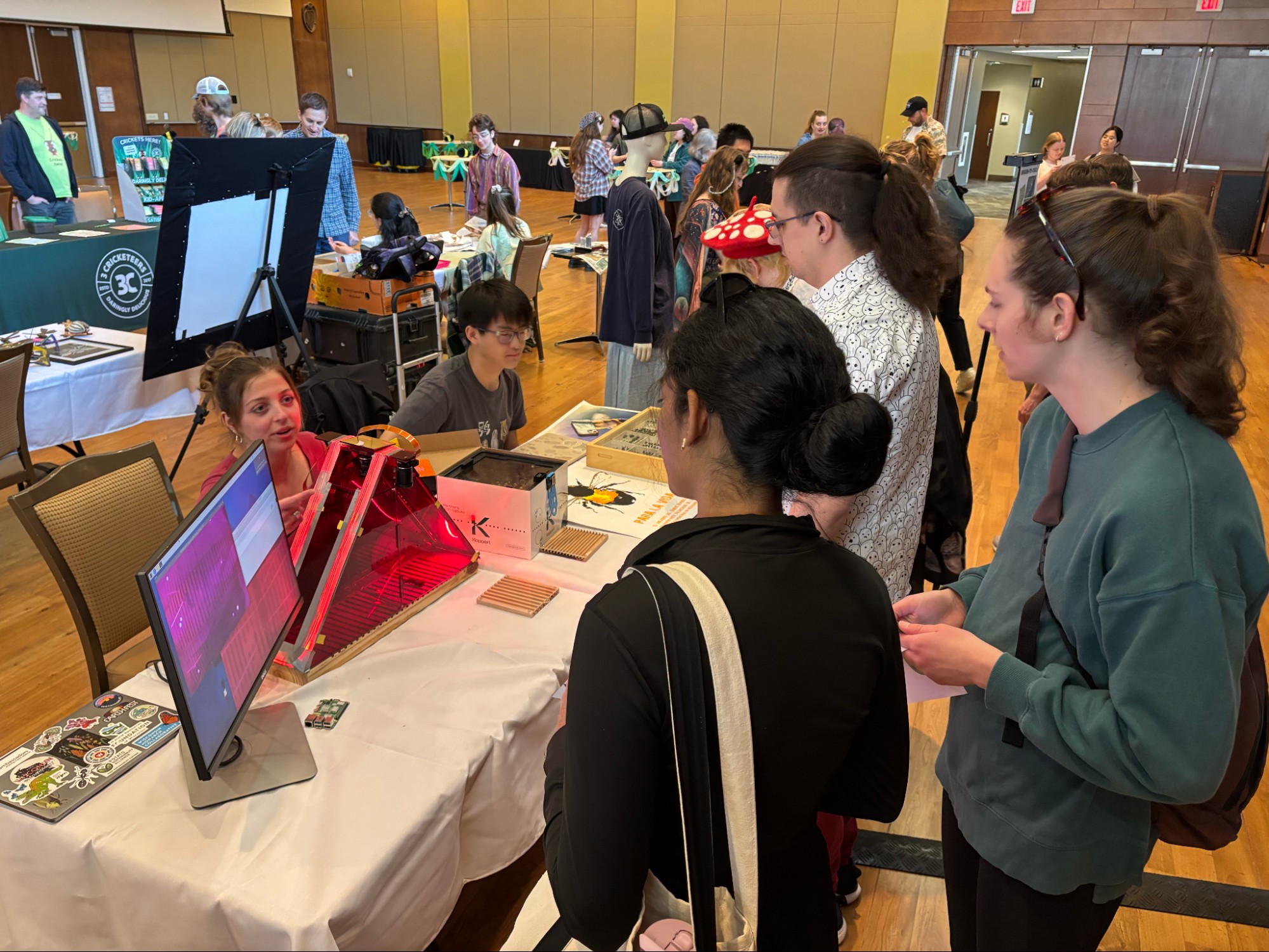
Personnel changes: A couple of folks have departed the lab, including Dr. Jeremy Hemberger (now Asst Professor in the Department of Entomology at the University of Minnesota) and Dr. Andrzej Affek (visiting sabbatical faculty member, who returned to Poland with his family at the beginning of August), as well as Shelby Loebertman, all-star undergraduate researcher! We also had some fantastic research interns over the summer – Wren Wrolstad and Finn Emond – through the High School Research Internship program.
We are thrilled to welcome Dr. Ari Grele (PhD, University of Nevada-Reno) to the lab, who received a prestigious Wisconsin Distinguished Research Fellowship and will pursue research on individual variation in plant-pollinator interactions, integrating approaches from chemical ecology with AI and automated insect monitoring.
Awards, milestones, and other noteworthy things: The lab’s research was focused in a recent episode of PBS Human Footprint (‘The Honey Trap’). James was also recently awarded a Sloan Fellowship, as well as being named a Scialog Fellow in Neurobiology in Changing Environments.
Also huge congrats to Anupreksha Jain on receiving research grants from the Society for Integrative and Comparative Biology, and the Botanical Society of America! Gigi Melone successfully advanced to PhD candidacy – congrats Gigi!! Finally, Victoria Salerno placed second at NCB ESA in the SysEB Section in the 10-minute paper student presentation competition in Lincoln, Nebraska!
Congrats also to lab members on an impressive number of fantastic recent presentations, including Gigi and Dr. Nicole DesJardins giving talks at the Wisconsin Chapter of the Wildlife Society Annual Meeting in Stevens Point, WI. Gigi also gave an invited talk at the WILDLABS variety hour. August Easton-Calabria recently gave a talk at the Animal Behavior Society, and Anupreksha Jain gave a talk at Behaviour 2025 in Kolkata. In January, Nicole, Anupreksha, former postdoc Dr. Matt Smith, and James all gave talks as part of a symposium (co-organized by James) at the Society for Integrative and Comparative Biology!
Gratton Lab
Sumikshya KC completed and deposited her MS thesis “Estimating the relative contribution of wild bees in the pollination of apple, cranberry, and squash in Wisconsin (USA)”. Byron Xia, undergraduate, was awarded a Holstrom Undergraduate research scholarship to apply data-science methodologies to understand morphometric variation in bumble bees. Hannah Gaines-Day (Research Scientist) ran the first Veterinary School mini-course on honey bee health. Kristine Schoenecker joined the lab as a MS Entomology student to work on a US FSW funded project to examine how rare and common bumble bee health changes over time through the use of museum specimens and morphometric analysis. Ella (Eleanor) Greene joined the lab as a Research Intern working on an NSF-funded project to develop improved computer-vision assisted methodologies (Beemachine.ai) for species-level identification of bees.
Groves Lab
Beginning July 1, 2025, Russ stepped away from his role as Department Chairperson after 5 years of service and re-entered research/extension/instructional responsibilities as an Applied Ecologist and Extension Vegetable Specialist. Very much appreciated the opportunity to provide leadership in the Department since 2020, and look forward to new and ongoing opportunities as they emerge.
Our laboratory is composed of five graduate research assistants including Victoria Salerno (joint with Dr. James Crall), Morgan Weissner, Emma Terris (joint with Dr. Sean Schoville), Claire Schloemer, and Chris Blume (Bayer Crop Science, Waterman, IL) – all of whom are pursuing a PhD program. Other critical membership in the laboratory includes Scott Chapman (PhD UW Ento 2000) and Ben Bradford (MS UW Ento 2016). Scott is a Field Research Director with the IR-4 Project focusing upon the development of, ‘Pest Management Solutions for Specialty Crops and Specialty Uses’. Ben is a Researcher in the Department who provides technical assistance, software design and coding expertise toward the development of decision support software (Vegetable Disease and Insect Forecasting, WIBee Data Dashboard, Wisconsin Irrigation Scheduling and the Crop Protection Network Risk Tool) as part of the Vegetable Entomology Laboratory.
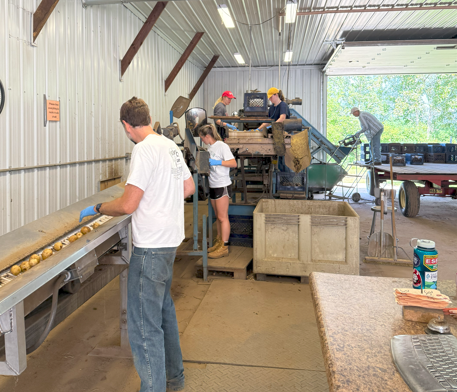
Congratulations to Morgan Weissner who successfully defended her MS thesis in August entitled Evaluating Application Timing of a Novel Biopesticide for Control of the Colorado potato beetle. Morgan was advised by Schoville, Young, and Groves and now continues on in the lab as a PhD student.
New and ongoing research and extension projects in the laboratory are funded by a combination of federal funding resources including USDA NIFA, A1541 Data Science for Food and Agricultural Systems (DSFAS) DSFAS; USDA NIFA Specialty Crop Research Initiative (SCRI), A1112 Pests and Beneficial Species in Agricultural Production Systems. Both national and regional commodity organizations support applied research in the laboratory including the USDA Potato Research, Special Grants Program, the Wisconsin Potato and Vegetable Growers Association, the Midwest Food Products Association, and several fee for service agreements supporting the development of pest management programs in specialty crop agriculture.
Awards:
- Victoria Salerno – 2025 NCB ESA SysEB Student Competition, 2nd place.
- Emma Terris – 2025 Wisconsin Distinguished Graduate Fellowship, Wisconsin Potato Industry Board.
- Morgan Weissner – 2025 Frank L. Haynes Graduate Student Research Award, Potato Association of America, 4th
- Sophie Verkoulen – 2025 Frank L. Haynes Graduate Student Research Award, Potato Association of America, 3rd
- Claire Schloemer – 2025 Foundation for Food and Agriculture Research (FFAR) Fellowship.
The FFAR Fellows Program provides professional development and career guidance to the next generation of food and agriculture scientists. The program aims to cultivate supportive relationships between graduate students and industry, government, and NGO peers to equip students with the skills needed to facilitate their transition to the workforce. Fellows are mentored over the 3-year program by university and industry representatives and engage with their peers in professional development programming both virtually and at four in-person sessions. This comprehensive approach to training, mentoring, and networking transforms Fellows into skilled practitioners in collaboration and team science, adept at navigating the complexities of multidisciplinary environments. Claire’s participation in the Fellows program has been generously sponsored by the Wisconsin Potato and Vegetable Growers Association.
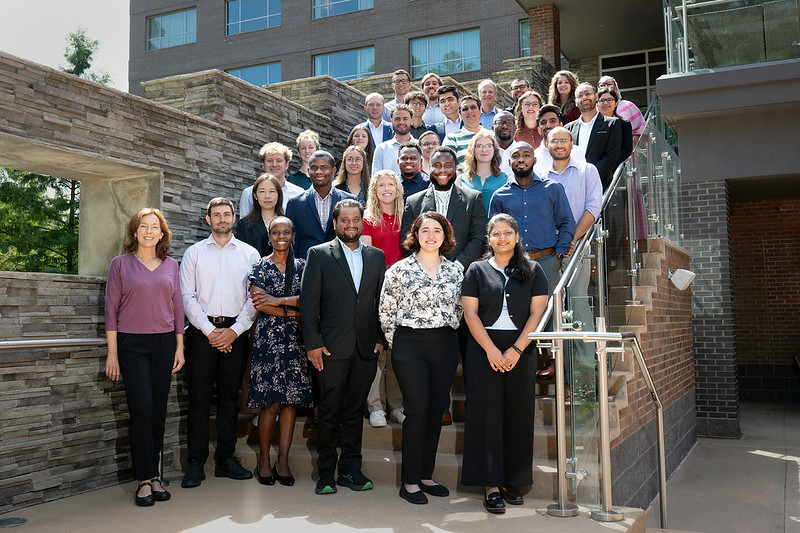
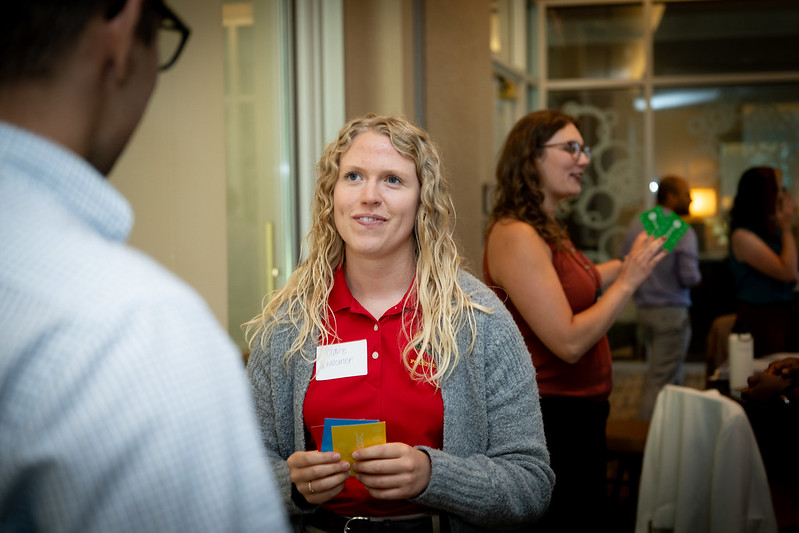
New Project Submissions:
- Inter Excellence II Program – LUAUS26 (BILATERAL PROJECTS OF THE CZECH REPUBLIC – USA). Combination of entomopathogens and bacterial metabolites for the sustainable control of insecticide-resistant potato pests. O. Skokova-Habustova and R. L. Groves (2025).
- USDA ARS, Potato Research Grants Program. Antagonistic interactions between insecticides, fungicides and foliar nutrient blends compromise the efficacy of tank mix partners. R.L. Groves, D. Halterman and A. Gevens (2025).
- DARPA AG-Biotechnologies Office. Advances to early warning systems for chemical and biological threat surveillance and detection. H. Wei and R.L. Groves (2025).
Select Publications (print or in press):
- Salgado, D.L., Groves, R.L., Owens, D., Waters, T.D., Burkness, E.C., Hutchison, W.D., Yang, F. and Nault, B.A. 2025. Performance of novel alternatives to neonicotinoid insecticide seed treatments for managing maggots (Diptera: Anthomyiidae) in large-seeded vegetable crops. Crop Prot., https://doi.org/10.1016/j.cropro.2025.107355.
- Ingram, J., Mattupalli, J. Mudrak, E., Curtis, M., O’Neill, P., Davenport, P., Gudmestad, N. Charkowski, A.O., Groves, R.L., Babler, B.N., Whitworth, J. Frost, K.E.., Karasev, A.V., Gray, S.M. and Filiatrault, M. 2025. Multi-year evaluations of an FTA card-based detection protocol for four vector-borne viruses affecting potato. Plant Dis. https://doi.org/10.1094/PDIS-11-24-2454-RE.
- Narva, K., Toprak, U., Alyokhin, A., Groves, R., Jurat-Fuentes, J.L., Moar, W., Nauen, R., Whipple, S., Head, G. 2025. Insecticide resistance management scenarios differ for RNA-based sprays and traits. Insect Molecular Biology. 34(4):518-526. https://doi.org/10.1111/imb.12986
- Cedden, D., Güney, G., Bayram, Ş., Baldwin, D., Coutu, C., Hegedus, D., Lipke, M.N., Groves, R.L., Doğan, C., Toprak, U. 2025. Multi-Omics analysis reveals diapause-associated lipid remodeling in the fat body of Colorado Potato Beetle. BMC Biology (accepted July 2025).
Guédot Lab
Dr. Birhanu Sisay Amare joined the lab as a postdoctoral researcher in the Department of Entomology in early 2025. His research focuses on insect chemical ecology and sustainable pest management, with an emphasis on developing semiochemical-based strategies such as monitoring, mass trapping, and mating disruption to improve codling moth management in apple orchards. He is also interested in integrating biological control approaches and exploring how plant–insect–microbe interactions can strengthen tree fruit IPM. Birhanu is excited to collaborate with growers to develop practical solutions for orchard insect pests.
Everyone else in the lab, Fatma Besbes, Sophie Perry, Emilie Parkanzky, and Elizabeth Hrycyna are finishing up a very busy field season with lots of Japanese beetle, codling moths, wasps, Eurasian hemp borer, and plant pathogens to collect from fruit and hemp fields. Damian Rodriguez, a Bioscience Youth Apprenticeship high school fellow, completed his work with us and is off to UW-River Falls for his undergraduate degree. Undergraduate students, Abby Ward, Robin Grygleski, and Eleanor Vogel worked with us diligently all summer and we were very happy to have them work with us this summer.
Publications:
- Trickle, C., Rodriguez Bonilla F., Guédot C., Holland L. 2025. Spatiotemporal detection of Candidatus phytoplasma Vacciniium witches’ broom, the causal agent of cranberry false blossom disease. Phytopathology. Accepted.
- DiGiacomo G., Mile-Kroening J., Atucha A., Rogers M., Holland L., Guédot, C. 2025. Economic Analysis of Biodegradable Paper vs. Plastic Mulch for Organic Day-Neutral Strawberry Production in the Upper Midwest. 35(4): 410-419. https://doi.org/10.21273/HORTTECH05639-25
- Mile-Kroening J. Abbrescia A., Workmaster B.A., Atucha A., Rogers M., Holland L., DiGiacomo G., Guédot, C. 2025. Impact of mulches on floral visitors in day-neutral strawberries and contribution of syrphid flies to strawberry pollination. Journal of Applied Entomology. https://doi.org/10.1111/jen.13444
Paskewitz Lab
We had a productive spring and summer with new research projects and collaborations, a site visit from our CDC program officer, a good meeting with our Advisory Board for the Midwest Center of Excellence for Vector-Borne Disease, several graduate students finishing, and some new folks joining us.
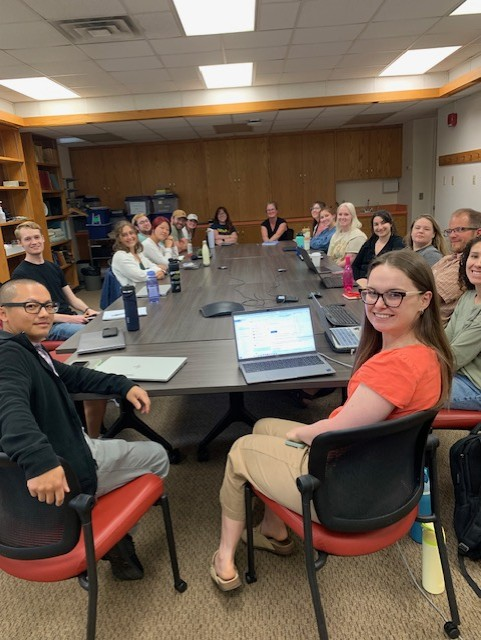
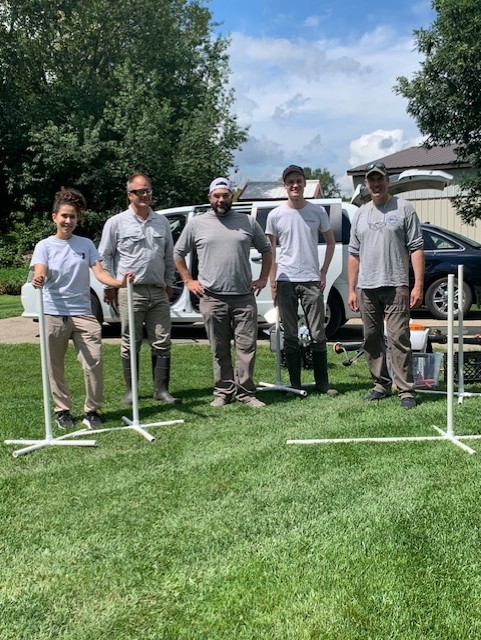
First, congratulations are due to Rosemary Philip, who worked on reducing tickborne disease risk to children at summer camps. Rosemary finished her MPH degree in May and moved to Texas 2 weeks later, where she joined the Harris County Public Health Department-Mosquito & Vector Control Division as an educator and evaluator.
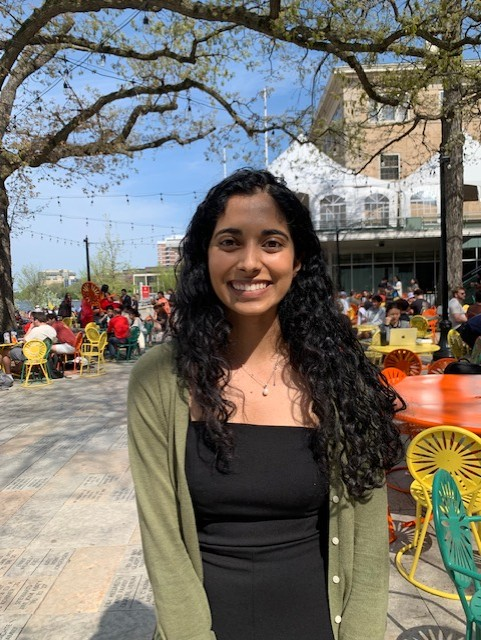
Another student, Ali Ross, successfully defended her MS in CBMS in August on the problem of cross-resistance to multiple pesticides in larval Culex (the mosquito that transmits West Nile virus). Ali took a well-earned short vacation in Hawaii and then moved to Los Angeles where she has a new job as a vector ecologist with the Greater LA Vector Control District.
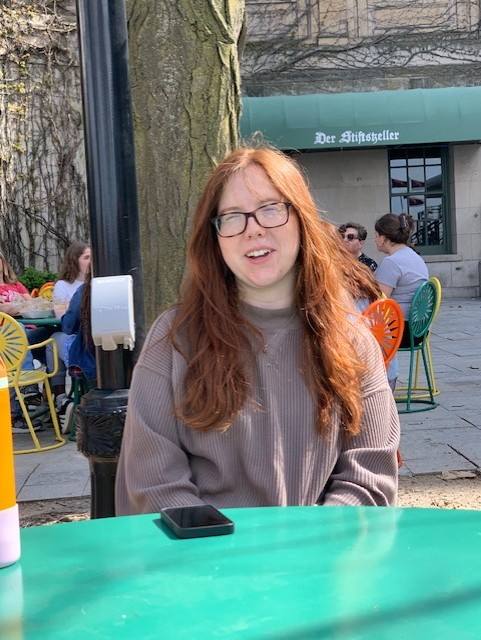
Finally, Zack Sieb, who graduated in December of 2024, has a new job with Monmouth County Mosquito Control, which allowed him to return to New Jersey and get back into research on tickborne disease.
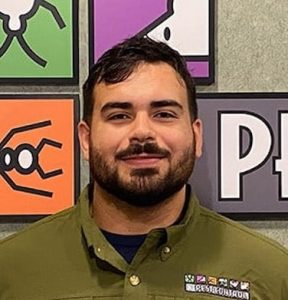
Dr. Zoe Narvaez joined us as a postdoctoral associate in the Midwest Center of Excellence for Vector-borne Disease from Rutgers. Zoe’s dissertation was entitled “Molecular and Ecological Insights into the Threat of Ticks and Tick-borne Pathogens in the Northeastern United States,” and contributed to understanding tick ecology and the public health risks associated with tick-borne diseases. Her research focused on tick surveillance and pathogen prevalence in New Jersey, drawing from both comprehensive field studies and molecular techniques. With the Center of Excellence, Zoe will focus on applied tick control, including evaluation of minimal risk (25b) products and strategies for land management.
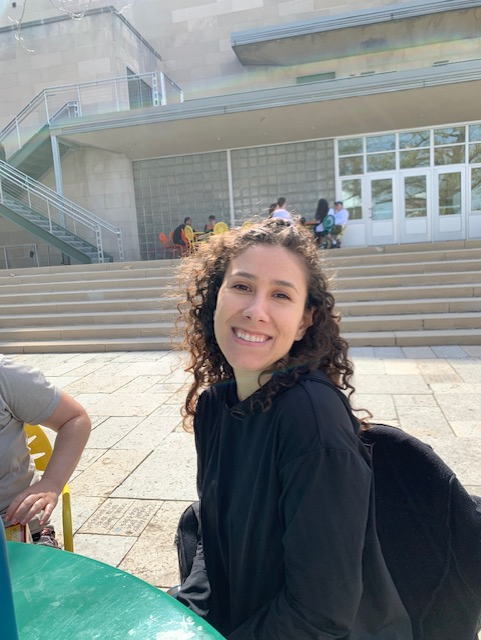
Seth Arnold is a second year MPH student working with new compounds for mosquito control in Chicago. Seth completed an important study on a new Valent product, RemoaTri, which combines 3 actives and should be more effective against adult mosquitoes that are resistant to other insecticides. Seth is finalizing the manuscript and will also serve as a TA for the introduction to Global Health class this fall (he was a Global Health major as an undergraduate and worked with Dr. Xia Lee on a tick project).
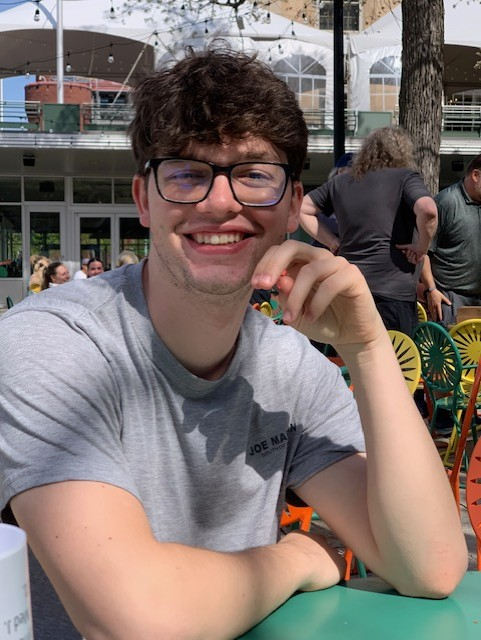
Finally, Adam Shumate was also a Global Health major who became a fellow with the Center of Excellence during summer of 2024 and stayed on as an LTE and research intern through summer of 2025. Adam is now entering the MS program in CBMS and focusing on a novel mechanical insecticide for tick control for his research project.
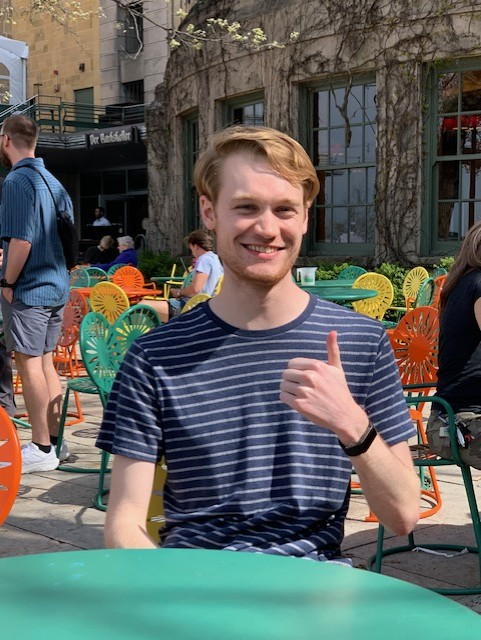
The major in Global Health has its administrative home in Entomology and continues to grow. The major currently has about 500-550 students enrolled. The certificate in Global Health is also in Entomology and serves about 600 students. Dr. Susan Paskewitz is the faculty director of the program and 2 faculty members, Drs. Linda Oforka and Adela Oliva Chavez, serve on the Global Health Program Committee. Dr. Todd Courtenay is the associate director and oversees many aspects of running a large program smoothly, including directing student services and advising.
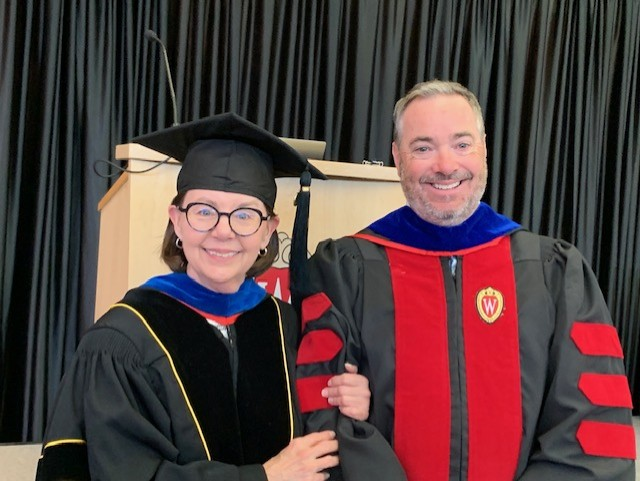
Publications:
- Lopez, Kristina, et al. “A multi-assay assessment of insecticide resistance in Culex pipiens (Diptera: Culicidae) informs a decision-making framework.” PLoS One6 (2025): e0324194.
- Schiffman, Elizabeth K., et al. “Willingness to pay for residential property-based and community-based tick control methods in Lyme disease-endemic areas of the Upper Midwest, United States.” Ticks and Tick-borne Diseases5 (2025): 102531.
- Zembsch, Tela, et al. “Tick spotting: using mannequins to evaluate individual efficacy at detecting Ixodes scapularis (Acari: Ixodidae).” Journal of Medical Entomology (2025): tjaf053.
Schoville Lab
The Molecular Ecology lab welcomes Nathan Lin, who will begin a masters this fall co-advised by Dr. Adela Oliva Chavez. Over the summer, Khuram Zaman completed his PhD and is now teaching biology courses at Bakersfield College in California. We also hosted Eleanor Ford as a summer REU student in the CMBS Molecular Biology of Stress program.
Recent awards include undergraduate scholars Ariel Maurer and Annika Webb, who both received the Hilldale Undergraduate Award, while Paula Vidal-Tama received the Sophomore Fellowship and Jose Gaytan received a McNair Scholarship. Among the graduate scholars, Emma Terris received the Wisconsin Distinguished Graduate Fellowship and an NC-SARE grant, while Zachary Farrand received the Systematics, Evolution, and Biodiversity Student Research Travel Award from the Entomology Society of America. Sean was awarded the Robert R. Spitzer Teaching Excellence Award and the Office of Child Care and Family Resources Award for Outstanding Student Parent Support.
Young Lab
Ann Marsh: Following her summer 2025 ENT 201 Lecturer appointment in the department, Ann is currently serving again as ENT 201 TA in a blended edition of ENT 201. Ann also continues work on her beloved staphylinids under the joint supervision of Drs. Schoville and Young.
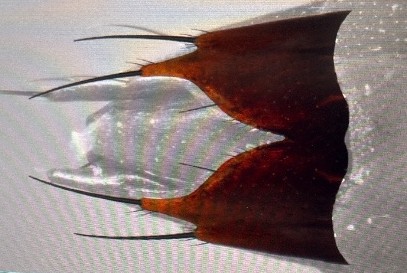
Jack Whisenant: This summer, Jack Whisenant taught the third round of his “Illustrating Insects” course to a range of undergraduate and graduate students from science and art backgrounds. Everyone brought their unique perspectives and experiences to the table, which added to their artistic explorations. Currently, Jack is working at the Cornell University Insect Collection as a museum assistant, and is part of the team coordinating the Entomological Collections Network, a society dedicated to collections and the ways in which they continue to contribute to a wide range of systematic and ecological studies. In the upcoming ESA meeting, he is also running a symposium highlighting techniques for preservation, documentation, and maintenance of specimens, aimed at anyone looking to ensure that their research is safeguarded and repeatable for generations to come (this symposium will also feature a highly regarded talk by Craig Brabant!). Though Jack is out in NY, he still returns to Madison periodically to visit and keep picking away on the 3rd floor mural.
Instruction: Summer 2025 found me teaching our ENT 468 Capstone: Studies in Field Entomology. The course included an extended stay up at the Kemp Natural Resources Research Station on Tomahawk Lake with a couple “day trips” to Lake Superior and other area sites.
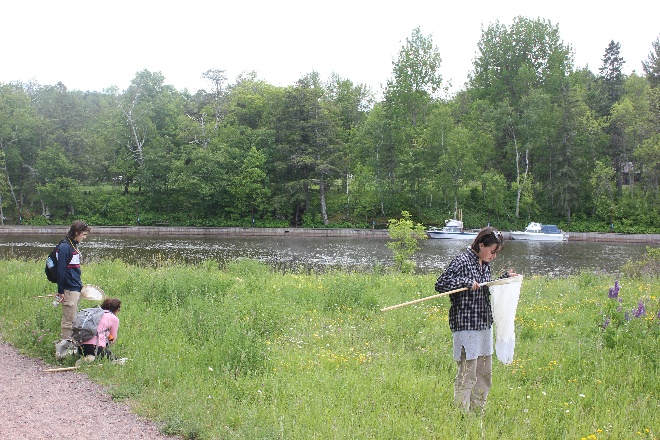
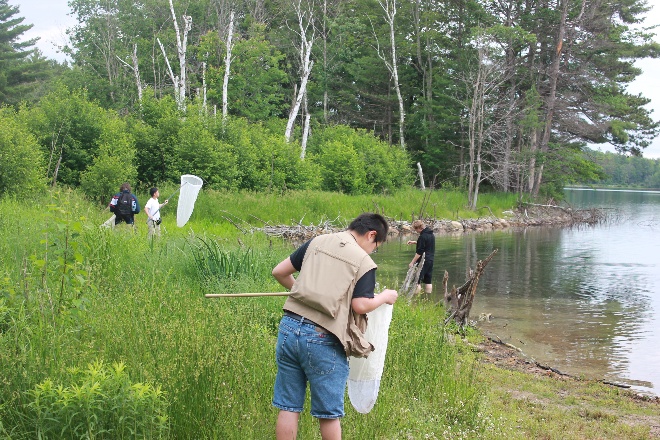
My current (fall semester) teaching schedule includes ENT 302: Introduction to Entomology, as always; my “FIG” course, ENT 375: Biodiversity and the Sixth Mass Extinction; and ENT 331: Taxonomy of Adult Insects (co-teaching with PJ Liesch). The spring rotation includes ENT 302 along with Advanced Taxonomy of Diptera (with a planned long weekend in the field back at Kemp and several collecting field trips to Hemlock Draw in the beautiful Baraboo Hills).
Outreach: Once again, I was on the planning committee and contributed along with many other faculty, staff and students to a very successful 2025 Insect Fest, 1 August at Olbrich Gardens. I also provided several invited talks throughout Wisconsin on fireflies, beetle diversity, and general Wisconsin insect diversity.
Awards:
- Michigan State University Department of Entomology 2024 Distinguished Alumnus Award.
- UW-Madison Greg Smith Award, “for outstanding contribution to the FIGs program”.
Research: Wisconsin-based summer 2025 fieldwork focused on another year of Malaise trap sampling at the Kemp Natural Resources Research Station. Preliminary sorting is way behind L, but I did find a single specimen of Laricobius rubidus LeConte, the first record of the family Derodontidae from Wisconsin!
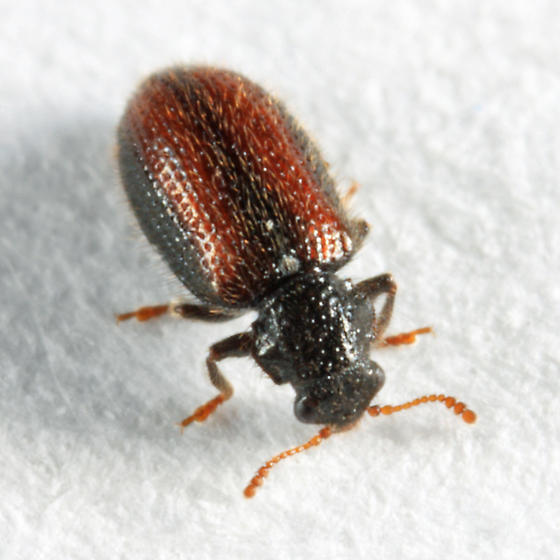
Research Publications:
- Gao, Qi, X.-Mei Yang, K. Young, Z. Pan. 2025. A new species of Pseudodendroides Blair, 1914 (Coleoptera, Pyrochroidae, Pyrochroinae) from China, with a key to the species. ZooKeys 1228: 287–294. DOI: 10.3897/zookeys.1228.142968
- Xin-Mei Yang, K. Young, B.-Lin Yang, Z. Pan. 2025. A new Dendroides species from China (Coleoptera, Pyrochroidae), with a key to the Palearctic species. Deutsche Entomologische Zeitschrift 72(1): 15–19. DOI 10.3897/dez.72.146919
- Young, D. K. and J. D. Marché II. 2025. New Wisconsin state records for three species of Eusphalerum Kraatz (Coleoptera: Staphylinidae: Omaliinae). The Great Lakes Entomologist
- Gao, Q, X.-Mei Yang, K. Young, Z.-Hui Pan, and Z. Pan. 2026. Taxonomic review of Pyrochroidae (Coleoptera: Tenebrionoidea) from Mêdog, China, with descriptions of two new species. Zootaxa (13 pages, 4 plates, 36 figures.) [Proofs submitted; to be published in 2026 as part of a special issue focused on the beetle diversity of the Mêdog area.]
- Pyrochroidae from Mêdog, China. Agnathus secundus Jelínek & Kubáň. B. Pseudopyrochroa antennalis (Blair). C. Pseudopyrochroa concava Gao, Young & Z. Pan, sp. nov. D. Pseudopyrochroa nyingchica Gao, Young & Z. Pan, sp. nov. A. Female. B–D. Male. Scale bars: 2 mm (A); 5 mm (B–D).
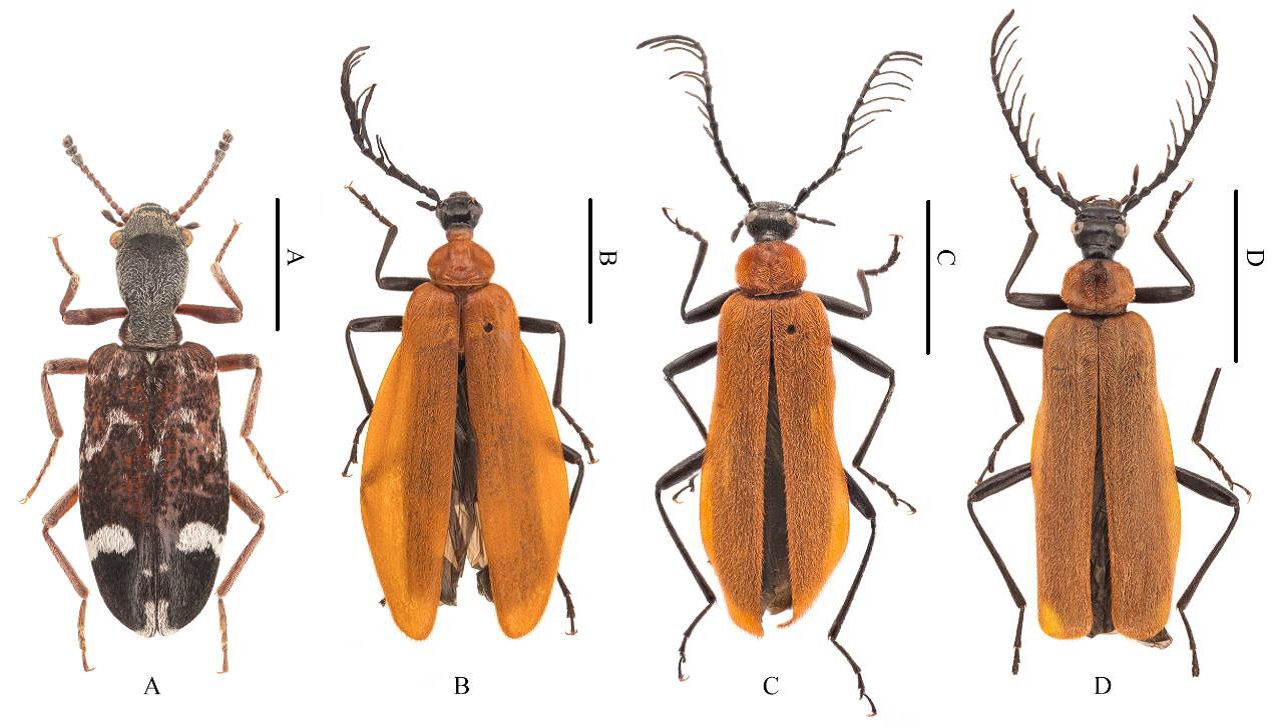
- Yang, Xin-Mei, Q. Gao, K. Young, X.-Sheng Chen, Z. Pan. Diet analysis of Pseudopyrochroa facialis (Coleoptera: Pyrochroidae: Pyrochroinae) based on DNA metabarcoding technology of gut contents. Ecology and Evolution (submitted 21 April 2025; 19 manuscript pages, 6 figures, 2 appendices.)
Book chapters: I am again authoring or co-authoring a number of familial chapters for the proposed new tome: Beetles of Canada and the United States:
- Volume 1: Morphology, Classification, Family Key, Archostemata—Polyphaga (Scirtoidea– Nosodendroidea). CRC Press of the Taylor & Francis Group. Boca Raton, FL.
- Young, D. K. Family Cupedidae. (8 manuscript pages, 1 plate.)
- Philips, T. K. and K. Young. Family Micromalthidae. (8 manuscript pages, 1 plate.)
- Volume 2: Polyphaga (Dascilloidea–Curculionoidea). CRC Press of the Taylor & Francis Group. Boca Raton, FL.
- Young, D. K. and P. J. Johnson. Family Artematopodidae. (7 manuscript pages, 1 plate.)
- Young, D. K. and P. J. Johnson. Family Brachypsectridae. (5 manuscript pages, 1 plate.)
- Hájek, Jiří and K. Young. Family Callirhipidae. (7 manuscript pages, 1 plate.)
- Keller, O. and K. Young. Family Prostomidae. (4 manuscript pages, 1 plate.)
- Keller, O. and K. Young. Family Synchroidae. (4 manuscript pages, 1 plate.)
- Young, D. K. and K. R. Hinson. Family Stenotrachelidae. (11 manuscript pages, 2 plates.)
- Young, D. K. Family Pyrochroidae. (17 manuscript pages, 3 plates.)
- Young, D. K. Family Ischaliidae. (7 manuscript pages, 1 plate.)
- Young, D. K. and D. A. Pollock. Family Tetratomidae. (12 manuscript pages, 2 plates.)
Alumni Sightings
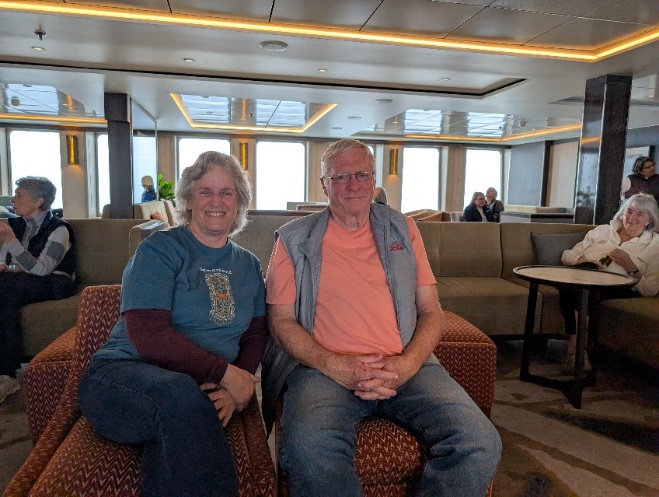
Holly (MS ’82, PhD ’86) met David (MS ’80, PhD ’84) here at UW in the Robert Jeanne lab while both were studying wasp biology. They now live in Spearfish, South Dakota, where Holly currently serves as Dean of the College of Arts and Sciences at Black Hills State University.
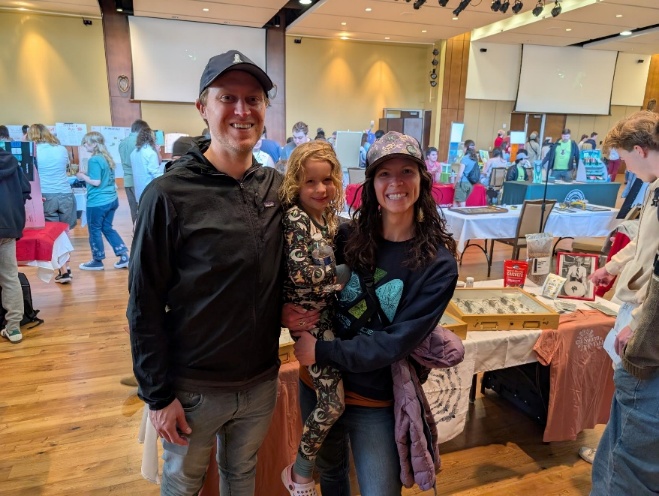
Bugs in the news
- Bee Colony Catastrophe: U.S. beekeepers reported the greatest honey bee colony losses ever recorded, with over 1.6 million colonies lost between June 2024 and March 2025, raising alarm for pollination and crop stability. – Honey Bee Health Coalition, Auburn University
- Chikungunya Outbreak in China: A serious outbreak of chikungunya virus (mosquito-borne) struck Guangdong Province, resulting in more than 7,000 confirmed cases and a CDC travel warning. – ABC
- Mixed messages on “Insectageddon” – Insect Declines Even in Non-Disturbed Areas: Alarming studies showed rapid insect declines even inside relatively undisturbed ecosystems in North America, furthering worries about insectageddon and ecosystem collapse. – Phys.org. And: “Insectageddon” May Be Paused in 2025: Some regions reported a surge in insects such as ladybirds and butterflies, possibly due to warm and wet spring weather, challenging dire predictions of widespread insect collapse. – Country Life (UK)
- USDA Moves to Combat Screwworm Expansion: The USDA announced sweeping new plans to protect U.S. livestock and wildlife against the northward spread of New World Screwworm, including a major sterile insect release program. – USDA
- Why tiny bee brains could hold the key to smarter AI: Researchers discovered that bees use flight movements to sharpen brain signals, enabling them to recognize patterns with remarkable accuracy. A digital model of their brain shows that this movement-based perception could revolutionize AI and robotics by emphasizing efficiency over massive computing power. – ScienceDaily
- Most of Earth’s species came from explosive bursts of evolution: A new study reveals that the majority of Earth’s species stem from a few evolutionary explosions, where new traits or habitats sparked rapid diversification. From flowers to birds, these bursts explain most of the planet’s biodiversity. – ScienceDaily
- Millipedes make ants dizzy — and might soon treat human pain: Millipedes, often dismissed as creepy crawlies, may hold the secret to future painkillers and neurological drugs. Researchers at Virginia Tech discovered unique alkaloid compounds in the defensive secretions of a native millipede species. These complex molecules, which cause disorientation in ants, interact with human neuroreceptors linked to pain and cognition. By decoding these natural chemical defenses, scientists could open a new path toward innovative drug therapies, though challenges remain in producing the compounds at scale. – ScienceDaily
- What happens when bees can’t buzz right? Nature starts falling apart: High heat and heavy metals dampen a bumblebee’s trademark buzz, threatening pollen release and colony chatter. Tiny sensors captured up-to-400-hertz tremors that falter under environmental stress, raising alarms for ecosystems and sparking ideas for pollination robots. – ScienceDaily
- Fiji ant plant builds tiny condos that stop ant wars: High in Fiji’s rainforest, the ant plant Squamellaria grows swollen tubers packed with sealed, single-door apartments. Rival ant species nest in these chambers, fertilizing their host with nutrient-rich waste while never meeting face-to-face. When researchers sliced open the walls, fatal battles erupted, confirming that the plant s compartmentalized architecture prevents war and sustains the partnership. CT scans of the tubers unveiled a meticulously isolated maze, showcasing evolution s clever fix for keeping multiple, unrelated houseguests peacefully productive. – ScienceDaily
- These beetles can see a color most insects can’t: Beetles that can see the color red? That’s exactly what scientists discovered in two Mediterranean species that defy the norm of insect vision. While most insects are blind to red, these beetles use specialized photoreceptors to detect it and even show a strong preference for red flowers like poppies and anemones. This breakthrough challenges long-standing assumptions about how flower colors evolved and opens a new path for studying how pollinators influence plant traits over time. – ScienceDaily
- Pincer plot twist: How female earwigs evolved deadly claws for love and war: Female earwigs may be evolving exaggerated weaponry just like males. A study from Toho University found that female forceps, once assumed to be passive tools, show the same kind of outsized growth linked to sexual selection as the male’s iconic pincers. This means that female earwigs might be fighting for mates too for access to non-aggressive males, challenging assumptions in evolutionary biology. – ScienceDaily
- Clever worms form superorganism towers to hitch rides on insects: Nematodes tiny yet mighty form wriggling towers to survive and travel as a team. Long thought to exist only in labs, scientists have now spotted these towers naturally forming in rotting orchard fruit. Remarkably, the worms aren’t just piling up they build responsive, coordinated structures that hitch rides on insects to escape harsh conditions. – ScienceDaily
Click here for the PDF version of this newsletter.
This article was posted in Entomology Digest.
